Fast Facts
- When: 15th to 28th January 2024
- Where: Melbourne, Australia
- Watch: Eurosport (Live) & BBC (Highlights)
- Official Website: Australian Open
The Australian Open is the first of the four Grand Slams that take place every year on the tennis circuit. Held in January, the tournament ensures that the tennis calendar starts the year in style.
Played in the heat of Melbourne on hard courts, the event is one that players will have been preparing for over the winter break.
Although the tournament’s television rights have gone to Eurosport, which means that for live coverage you’re going to need a subscription to watch it, many betting sites will offer a streaming service and highlights are available on the BBC.
Existing Customer Free Bets & Money Back Offers
Please Note: This event has now ended.
Stats Articles
- How Many Qualifiers & Unseeded Players Have Won a Tennis Major?
- How Often Do Tennis Players Lose After Going 2 Sets Up in the Grand Slams?
- Grand Slam Winners in Tennis: Which Players Have Won All Four Major Tournaments?
Event Stats
Australian Open Men’s Singles Last Eight: 2022 to 2024
| Stage of Elimination | 2022 | 2023 | 2024 |
|---|---|---|---|
| Winner | Rafael Nadal (6) | Novak Djokovic (4) | Jannik Sinner (4) |
| Runner-up | Daniil Medvedev (2) | Stefanos Tsitsipas (3) | Daniil Medvedev (3) |
| Semi-finals | Matteo Berrettini (7) | Tommy Paul | Novak Djokovic (1) |
| Stefanos Tsitsipas (4) | Karen Khachanov (18) | Alexander Zverev (6) | |
| Quarter-finals | Gael Monfils (17) | Andrey Rublev (5) | Andrey Rublev (5) |
| Denis Shapovalov (14) | Jiri Lehecka | Hubert Hurkacz (9) | |
| Jannik Sinner (11) | Ben Shelton | Taylor Fritz (12) | |
| Felix Auger-Aliassime (9) | Sebastian Korda (29) | Carlos Alcaraz (2) |
Australian Open Women’s Singles Last Eight: 2022 to 2024
| Stage of Elimination | 2022 | 2023 | 2024 |
|---|---|---|---|
| Winner | Asleigh Barty (1) | Aryna Sabalenka (5) | Aryna Sabalenka (2) |
| Runner-up | Danielle Collins (27) | Elena Rybakina (22) | Zheng Qinwen (12) |
| Semi-finals | Madison Keys | Magda Linette | Coco Gauff (4) |
| Iga Swiatek (7) | Victoria Azarenka (24) | Dayana Yastremska | |
| Quarter-finals | Jessica Pegula (21) | Donna Vekic | Barbora Krejčíková (9) |
| Barbora Krejcikova (4) | Jelena Ostapenko (17) | Anna Kalinskaya | |
| Alize Cornet | Karolina Pliskova (30) | Marta Kostyuk | |
| Kaia Kanepi | Jessica Pegula (3) | Linda Nosková |
Schedule
- Qualifying – Monday 8th to Friday 12th January 2024
- 1st Round – Monday 15th & Tuesday 16th January 2024
- 2nd Round – Wednesday 17th & Thursday 18th January 2024
- 3rd Round – Friday 19th & Saturday 20th January 2024
- 4th Round – Sunday 21st & Monday 22nd January 2024
- Quarter Finals – Tuesday 23rd & Wednesday 24th January 2024
- Semi Finals – Thursday 25th & Friday 26th January 2024
- Women’s Final – Saturday 27th January 2024
- Men’s Final – Sunday 28th January 2024
About The Australian Open
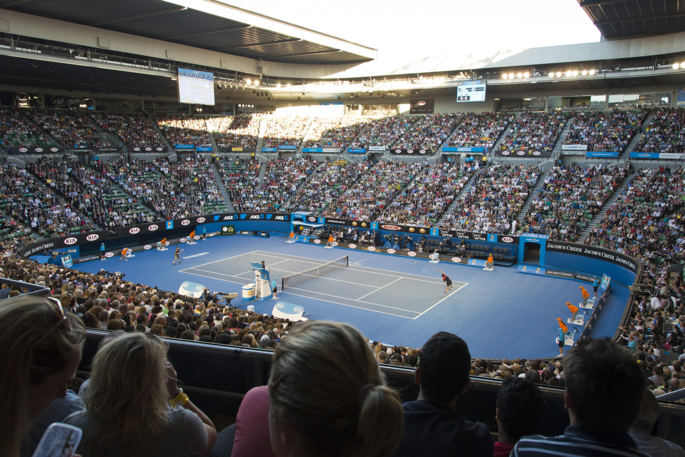
The Australian Open is one of tennis’s four Majors and is held at Melbourne Park every year. The venue has been used to host the event since 1988. ‘The Park’, as it’s affectionately referred to by locals, is notorious for having some of the fastest hard courts in the world. One of the reasons behind this is the baking Melbourne heat, which is also a pretty big factor for players of the tournament and is something extra that they need to manage.
Typically, the Australian Open is only beaten in attendance by the US Open and it welcomes a massive following of people from Melbourne and around the world. In 2020, for example, no fewer than 812,000 people came to the event in some capacity.
The History of the Tournament
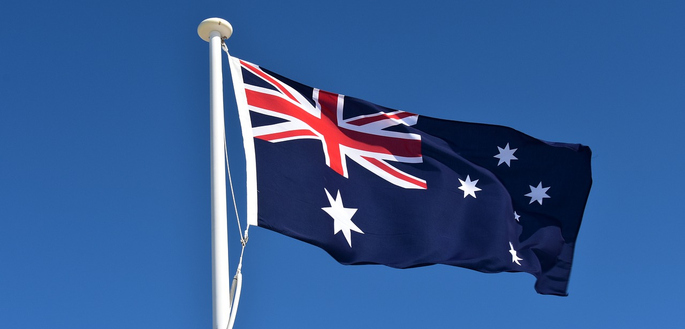
The Australian Open has been around since 1905, which actually makes this the youngest of the four majors. It wasn’t until 1969 that the name ‘Australian Open’ was first adopted, with names prior to that including the Australasian Championships and the Australian Championships. Interestingly, the home of the Australian Open has moved about several times over the years within Australia, landing in five different cities including Melbourne, Sydney, Adelaide, Brisbane and Perth. The tournament has also been held twice in New Zealand, taking place in Christchurch in 1906 and Hastings in 1912.
The first ever tournament was hosted by the Warehouseman’s Cricket Ground of Melbourne, which has since become the Albert Reserve Tennis Centre. That was when it was known as the Australasian Championships, with the shift in name to Australian Championships not coming until 1927. Despite how long it’s been in existence for, it didn’t become one of tennis’s Majors until 1924 when the International Lawn Tennis Federation decided that it should be. That was also the point at which the structure of the competition was altered in order to include seeding.
The decision to move the tournament to Melbourne permanently came in 1972, based on the fact that it attracted more spectators than anywhere else in the country. Initially Kooyong Lawn Tennis Club was used as the venue, with the shift to Melbourne Park coming sixteen years later. That was because the sheer size of the competition had outgrown the facilities available at Kooyong Lawn Tennis Club. The move was immediately justified, with the crowds for the tournament in 1988 numbering more than 244,000, as opposed to the 140,000 who had gone to Kooyong the year before.
Becoming an International Tournament
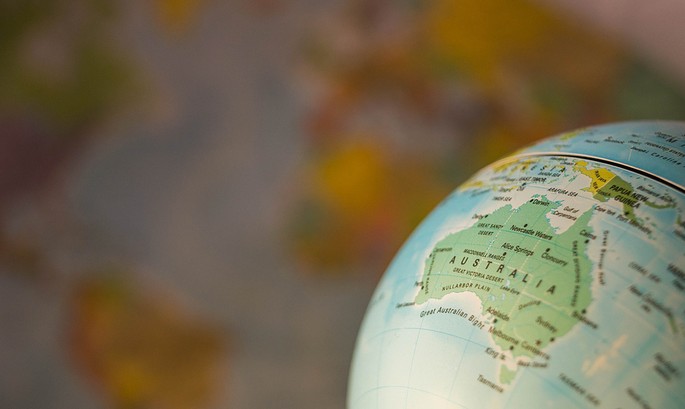
Nowadays it’s easy to forget how hard it was to travel to Australia at the start of the twentieth century. Nevertheless, it wasn’t easy to get to the other side of the world and so few non-Australian players entered the tournament in its more formative years. Even by the 1920s it still took around forty-five days to travel to the continent by boat from Europe.
It wasn’t all that much easier for native Australians to travel to the competition, given the difference from the West side of the country to the East is about two thousand miles. When it was held in Christchurch, New Zealand in 1906 just ten players took part in it and only two of them were Australian. The tournament wasn’t helped by the fact that every Australian state and New Zealand itself had their own championships, making them reluctant to take part in it.
As it happens, the first players to travel and play in the tournament from outside of Australia were the Davis Cup team from the United States who travelled by boat in 1946. Even once travel to Australia had become easier, few of the top players in the game were willing to travel and take part in the competition. The likes of Ilie Năstase, Manuel Santana and Björn Borg either didn’t enter the tournament at all or only came to play in it on rare occasions.
Things didn’t really start to shift in terms of the mentality of non-Australian players towards the Open until the start of the 1980s. The National Tennis League, which was responsible for such stars as Rod Laver and Roy Emerson, had actually prevented its players from travelling to Australia to play in the competition because the prize money was so low. That, combined with the inconvenient timing of the tournament being held over Christmas and New Year, continued to stop major players entering it until Ivan Lendl, John McEnroe and Mats Wilander did so in 1983.
It was after the arrival of such players that the International Tennis Federation began to encourage the Lawn Tennis Association of Australia to consider a change in venue on account of the fact that Kooyong Stadium wouldn’t be able to cope with the influx of spectators likely to want to watch the world’s best players. When it moved to Flinders Park, which is what Melbourne Park was known as in 1988, that also dictated a change of court surface from grass to a hardcourt.
The Court Surface
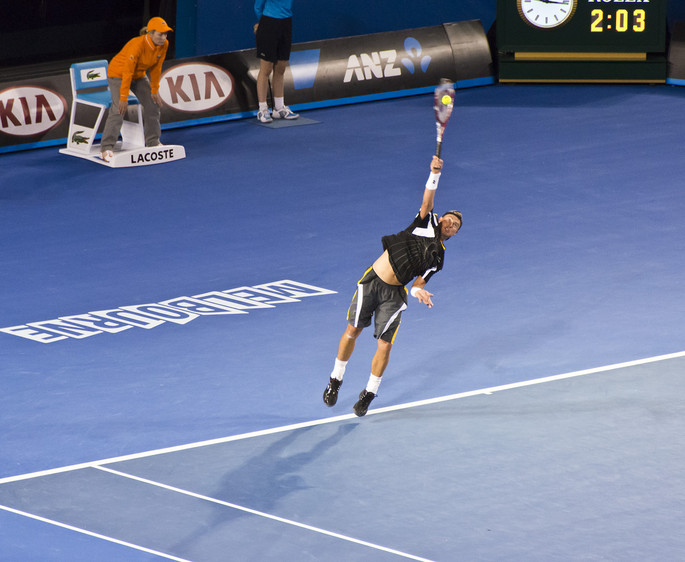
When the Australian Open was moved from Kooyong Stadium to its current location, the change in venue saw the end of the grass court era in the competition and left Wimbledon as the only Major played on grass. The new hardcourt nature of the tournament required a new surface and a mixture of polyurethane rubber, fibreglass and other things that was known as Rebound Ace. Manufactured by the Sports Surface Division of California Products Corporation, it was laid on top of either reinforced concrete or asphalt.
The only player to win the Australian Open on both grass and the Rebound Ace surface was Mats Wilander, with the Rebound Ace being swapped out for Plexicushion Prestige in 2008. That’s a more cushioned acrylic surface that boasts a medium pace, making for more interesting tennis. The two players to win on both the Rebound Ace and the Plexicushion Prestige were also two of the best players of all time, Roger Federer and Serena Williams.
From 2019 the surface used was GreenSet. The characteristics of this surface are similar to Plexicushion and despite the name, is still blue in appearance.
Tournament Format
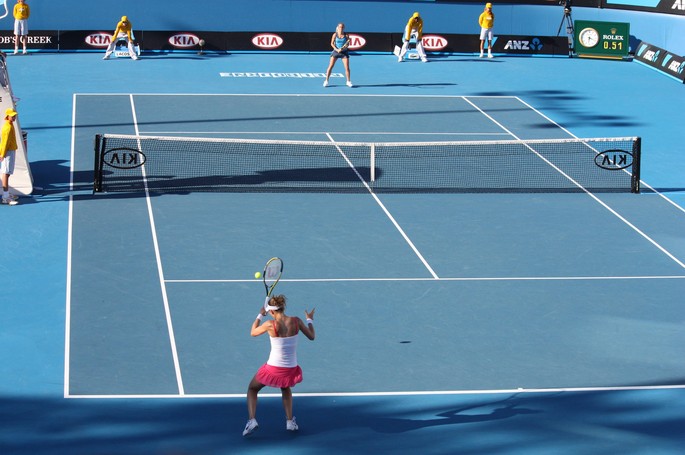
By Nick Hewson, flickr
Like the majority of the ‘Open’ tennis tournaments, the Australian Open allows opportunities for both professional and amateur players to qualify for the event. Back in the early days, it was strictly for amateur players, before a professional governing body took over and allowed players from both sides to compete, should they qualify, in 1969.
As with all of the Major tournaments, there are 128 players who start out in the Australian Open before being whittled down over the course of the different rounds. The competition goes straight into a knockout format, with seeded players dictated by the world rankings in separate ends of the draw.
The nature of the seeding means that the best players are given an advantage depending on their world ranking. The tournament is split into two halves, so the number one seed will be placed as far away from the number two seed as possible and so on, highlighting their advantage in qualification over the field.
Both the men’s and women’s games will end up running through a last 32, last 16, quarter-final, semi-final and then a final stage. Each game for the men is best of five sets, whilst the women are best of three sets. From 2019, 10-point tiebreakers were introduced at 6-6 in the final sets for both the men and women.
Prize Money & Ranking Points
As one of the four Majors in tennis, the Australian Open sees the most successful players rewarded with both cash prizes and World Ranking Points for the Association of Tennis Professionals and the Women’s Tennis Association. Here’s a look at how it breaks down depending on the stage of the tournament that a player reaches:
Australian Open 2024
Singles Prize Money & Ranking Points
| Round Reached | Prize Money (AUSD) | Men’s Ranking points | Women’s Ranking Points |
|---|---|---|---|
| Winner | $3,150,000 | 2,000 | 2,000 |
| Runner-Up | $1,725,000 | 1,300 | 1,300 |
| Semi-Finals | $990,000 | 800 | 780 |
| Quarter-Finals | $600,000 | 400 | 430 |
| Round 4 | $375,000 | 200 | 240 |
| Round 3 | $255,000 | 100 | 130 |
| Round 2 | $180,000 | 50 | 70 |
| Round 1 | $120,000 | 10 | 10 |
| Qualifying R3 | $65,000 | 16 (30 Qualifier) | 30 (40 Qualifier) |
| Qualifying R2 | $44,100 | 8 | 20 |
| Qualifying R1 | $31,250 | 0 | 2 |
Interesting facts
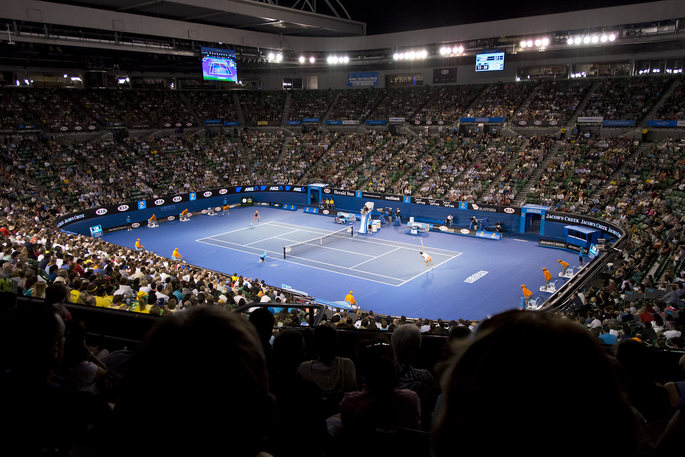
The fact that the Australian Open was not open to professionals prior to 1969 means that stats and records are often split in two when being referenced. Regardless, there’s still plenty we can tell you about the tournament.
Here’s a look at some of the interesting facts surrounding the competition:
- The most successful male player before 1969 was Roy Emerson with six titles, won between 1961 and 1967
- At the time of writing, Novak Djokovic has the most Australian Open titles with ten, four ahead of Roger Federer
- The same players also hold the records for the most consecutive titles win, with Emerson picking up five before 1969 and Djokovic managing three in a row between 2011-2013 and 2019-2021
- The same is true of the Doubles game, with Adrian Quist winning ten before 1969, all of them consecutively, and Bob and Mike Bryan winning six after 1969, of which three were consecutive
- If you look across all disciplines then Adrian Quest is the most successful male player pre-1969. After 1969, Novak Djokovic with his ten titles is the most successful player followed by Bob and Mike Bryan and Roger Federer having all won six titles
- There’s a standout candidate in the women’s game, with Margaret Court having won eleven singles titles across both the amateur and professional era of the tournament
- Of those eleven titles, seven came in the amateur era, which is the same number as Serena Williams has managed in the professional era
- Court won all seven of her amateur titles back-to-back, meaning she’s won the most consecutive titles over all
- In the professional era, Court, Evonne Goolagong Cawley, Steffi Graf, Monica Seles and Martina Hingis have all won three consecutive titles
- In the Women’s Doubles game, Thelma Coyne Long won twelve titles before 1969 and Martina Navratilova won eight after, making them the two most successful women from each era
- The woman who has won more titles in any discipline than any other is again Margaret Court with 23, ahead of Nancye Wynne Bolton, who picked up 20 in the amateur era
- Post-1969, Martina Navratilova has won twelve titles of any discipline, making her the most successful female player since the Australian Open became professional
- The youngest ever male Singles winner of any era was Ken Rosewall, who was eighteen years and two months in 1953
- The youngest women Singles winner was Martina Hingis who was sixteen years and four months when she was victorious in 1997
